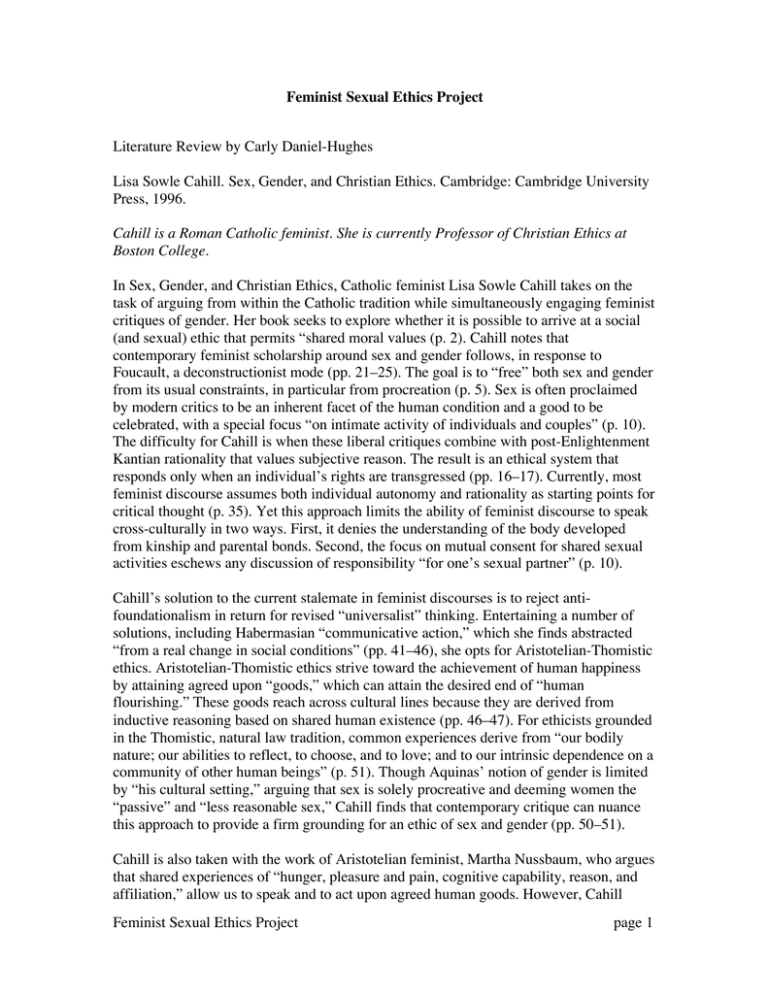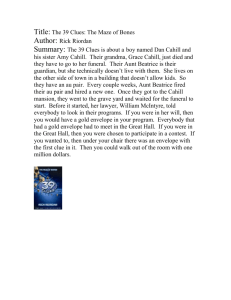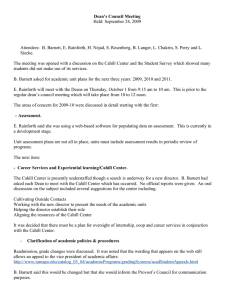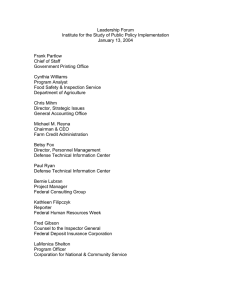
Feminist Sexual Ethics Project
Literature Review by Carly Daniel-Hughes
Lisa Sowle Cahill. Sex, Gender, and Christian Ethics. Cambridge: Cambridge University
Press, 1996.
Cahill is a Roman Catholic feminist. She is currently Professor of Christian Ethics at
Boston College.
In Sex, Gender, and Christian Ethics, Catholic feminist Lisa Sowle Cahill takes on the
task of arguing from within the Catholic tradition while simultaneously engaging feminist
critiques of gender. Her book seeks to explore whether it is possible to arrive at a social
(and sexual) ethic that permits “shared moral values (p. 2). Cahill notes that
contemporary feminist scholarship around sex and gender follows, in response to
Foucault, a deconstructionist mode (pp. 21–25). The goal is to “free” both sex and gender
from its usual constraints, in particular from procreation (p. 5). Sex is often proclaimed
by modern critics to be an inherent facet of the human condition and a good to be
celebrated, with a special focus “on intimate activity of individuals and couples” (p. 10).
The difficulty for Cahill is when these liberal critiques combine with post-Enlightenment
Kantian rationality that values subjective reason. The result is an ethical system that
responds only when an individual’s rights are transgressed (pp. 16–17). Currently, most
feminist discourse assumes both individual autonomy and rationality as starting points for
critical thought (p. 35). Yet this approach limits the ability of feminist discourse to speak
cross-culturally in two ways. First, it denies the understanding of the body developed
from kinship and parental bonds. Second, the focus on mutual consent for shared sexual
activities eschews any discussion of responsibility “for one’s sexual partner” (p. 10).
Cahill’s solution to the current stalemate in feminist discourses is to reject antifoundationalism in return for revised “universalist” thinking. Entertaining a number of
solutions, including Habermasian “communicative action,” which she finds abstracted
“from a real change in social conditions” (pp. 41–46), she opts for Aristotelian-Thomistic
ethics. Aristotelian-Thomistic ethics strive toward the achievement of human happiness
by attaining agreed upon “goods,” which can attain the desired end of “human
flourishing.” These goods reach across cultural lines because they are derived from
inductive reasoning based on shared human existence (pp. 46–47). For ethicists grounded
in the Thomistic, natural law tradition, common experiences derive from “our bodily
nature; our abilities to reflect, to choose, and to love; and to our intrinsic dependence on a
community of other human beings” (p. 51). Though Aquinas’ notion of gender is limited
by “his cultural setting,” arguing that sex is solely procreative and deeming women the
“passive” and “less reasonable sex,” Cahill finds that contemporary critique can nuance
this approach to provide a firm grounding for an ethic of sex and gender (pp. 50–51).
Cahill is also taken with the work of Aristotelian feminist, Martha Nussbaum, who argues
that shared experiences of “hunger, pleasure and pain, cognitive capability, reason, and
affiliation,” allow us to speak and to act upon agreed human goods. However, Cahill
Feminist Sexual Ethics Project
page 1
rejects Nussbaum’s category of “affiliation,” which she finds betrays a liberal agenda and
once again overlooks the way biological reproduction shapes women’s experience (p.
60). Cahill argues that when natural law is interpreted through a Kantian-Enlightenment
frame it becomes (or can become) a “rigid system of moral absolutes” (p. 68). In contrast,
Cahill suggests that the work of modern critics, like Catholic theologian David Tracy, can
nuance natural law to account for varying historical and social contexts. Tracy posits the
existence of “classics,” any text (or other creative products) that comes from one
particular tradition but is able to speak to others. In this way, a “classic” can build a
conversational bridge from one culture to another (pp. 70–71). Though no culture ever
achieves ultimate translation of the “classic,” its appeal is timeless. The classic proves to
be invaluable for ethical discourse and action. Without obfuscating differences in
particular cultures, Tracy states that though manifestations will be unique in different
contexts, “we can understand justice and injustice in different cultures by virtue of their
resemblance-in-difference to our own experience” (p. 71). For Tracy, and consequently
for Cahill, truth is attained by way of collective, human knowing. In Cahill’s opinion, this
stance allows us to probe the deeper questions of war, famine, and poverty in order to
gain “productive intercultural ethical exchanges which secure real results for human wellbeing”(p. 72).
Cahill begins her examination of common goods with a focus on the body. Arguing that
bodies cannot be viewed solely as the product of discourse, because “they interact in
social space,” Cahill suggests that fundamental to shared experience is our bodily nature
(pp. 73–76). Cahill offers three necessary considerations for an ethic of sex and gender:
the body as invariant over time and space; bodily experience as regulated by cultural
institutions, and that these experiences are engaged with a “critical and normative stance”
(p. 80). For Cahill, monogamy and kinship are key in this discussion. Though
sociobiologists have argued that humans are not “designed to be monogamous,” Cahill
points out that “sex and reproduction” are not fully biological functions—they are also
social. There are survival advantages for raising children in kinships units. Further,
monogamy meets the human need for “lasting relationships,” and offers protection and
security for infants of a heterosexual union (pp. 94–97). With regard to sexual
orientation, Cahill suggests that sexuality can fluctuate over a lifetime (pp. 100–101). If
lesbianism is employed by some feminists as a means to transform political realities,
Cahill wonders if sexuality is indeed pliable, and whether gayness “the best and most
effective instrument of change” (p. 101).
Cross-culturally, Cahill finds that kinship, structured around “the organization of labor,
goods exchange, and property rights, and lineage of children,” are more common than the
liberal notions of “emotional fulfillment” (p. 105). Gender and sex are central (though
overly exaggerated, per Foucault) to human social arrangements and existence, which can
and have limited women’s “flourishing” (p. 110). She maintains that a focus on
addressing ethical critiques “at the center,” namely heterosexual, reproductive, and
patriarchal marriage, will best help to achieve “human flourishing” for women,
contingent on “gender equality” (p. 116). For the majority of the world’s women,
economic dependence on men is a greater bar to achieving full equality than more liberal
issues, such as divorce, lesbianism, and extra-marital sex (p. 116).
Feminist Sexual Ethics Project
page 2
Cahill finds a model for human relationships in the New Testament’s focus on
“compassion, mercy, peace, and solidarity with the poor”(p. 121). In Jesus’ ministry,
Cahill recognizes “transformation and reversal,” where the patron-client economy, purity
regulations, even patriarchal marriage, and other forms of exclusion are rejected in favor
of the full inclusion of marginal persons (pp. 124–152). In other early Christian texts,
Cahill finds an effort to challenge existing oppressive Greco-Roman structures. For
instance, Paul’s denunciation of homosexuality is in fact a reaction to “a system of
domination and control,” where men took advantage of powerless boys (p. 157).
Emphasis on chastity marks an objection to Roman patriarchal marriage in exchange for
“communal solidarity” (p. 152). Even the controversial Haustafeln, household codes,
represent the social realities for first-century Christians, and are remarkable in their
inclusion of both women and slaves (p. 161). Ultimately, the New Testament presents a
vision of “moral discipleship,” where marginalized persons are treated as valuable human
beings (p. 163). As social and historical situations have changed, imitation of these
models of the past is not the goal of ethics. (Present realities suggest to Cahill that a
restructuring of the family, rather than a dismantling of this institution, should and do
occupy our energies today.) Instead, she suggests that the “radical nature” of early
Christian communities’ emphasis on inclusion should guide present discussion of an ethic
of sex and gender (pp. 162–164).
Picking up on the early Christian emphasis on inclusion and compassion, Cahill looks at
modern Catholic treatment of sex, marriage, and family. Considering clerical celibacy,
she finds that continence was once a means for women (and men) to escape family life
and have access to power, to devote more time to a contemplative life, as well as provide
a challenge to oppressive patriarchal marriage (p. 172). Focusing particularly on required
priestly celibacy, she argues that marriage is now able to provide the “ideals” that a
chaste lifestyle once maintained (p. 182). With indissolubility as well, Cahill argues that
divorce was intended to discourage abuse of male unequivocal divorce rights, which was
a particular disadvantage to women’s financial well-being. However, as this precaution is
no longer necessary, current prohibition of divorced persons from the community is
counter to Christian teaching (p. 197).
Finally, with regard to sex, Cahill finds that the Church has inadequately responded to the
concrete human needs of its community. Treating contraception as “a compromise” of the
sexual union idealizes sex in a way that few marital sexual encounters can achieve (p.
202). Continued valorization of motherhood over all other female roles also restricts
women’s access to the public arena (p. 204). She wonders if “fear of woman’s social
equality” underlies the continued ban on birth control and emphasis on motherhood (p.
205). Cahill suggests that birth control may be necessary, particularly in poor countries,
but she is not supportive of recent Pro-Choice discussions. The use of abortion as birth
control threatens “the social support of pregnancy, birth, and childrearing in the family”
(p. 214). She remains sympathetic to the severe realities of gender inequality that
promote the abortion rights argument (p. 213). Yet, Cahill finds value in the Church’s
concern about divorcing sex from procreation, and thereby, responsibility. She asserts
that the family should be seen “as a ground for contributing to the common good” (p.
Feminist Sexual Ethics Project
page 3
206). Using the patristic model of “family as church” (with a nuance, as women are
barred from the priesthood), the family is the site of social justice and unconditional love
that can inform and “transform the world”(p. 212). She posits that though dramatic
structural changes are required to achieve equality for women, the Church must begin the
work of challenging the inequalities of sex, race, and gender within the family (pp.
214–215).
In her final chapter, Cahill looks at the critical issue of birth technology, including:
surrogacy, in vitro fertilization with donor gametes, and donor insemination. She finds
that these technologies again reveal a liberal agenda that emphasizes personal autonomy
and choice in regard to childbearing (pp. 217–219). However, these technologies are
directed to a small, wealthy percentage of the world’s population, and as a result, these
technologies should not be considered in terms of their ultimate good (p. 225). In fact,
birth technologies reify the same patriarchal structures that feminists aim to dismantle.
Surrogacy, for instance, emphasizes the importance of establishing a child’s paternity.
Other methods, including fertility drugs, intimate that women’s most valuable role is as a
mother. In some cases, women go to extreme lengths to insure that they can bear a child.
The discourse around these treatments can make women feel that they have failed when
with the aid of advanced technologies, they do not acquire the desired result (p. 242).
Further, the sale of gametes commodifies human bodies (p. 244). The rhetoric of personal
choice overlooks the way that science has in fact circumscribed women’s decisions with
regards to infertility (p. 244). Medical science can be coercive, prompting women to
continue treatments as the “only option.” Arguing that laws (particularly in the U.S.) that
do not prohibit such practices tacitly endorse them, Cahill proposes that new legal
regulations should restrict the use of reproductive technology (pp. 249–251).
Cahill finds adoption a better way for infertile couples to build a family; yet, she notes
that adoption should be closely critiqued to insure that it does not become an industry
“trafficking babies” to wealthy Western populations (p. 248). However, given the number
of children in desperate need of homes, Cahill finds this practice a meaningful way for
couples to have children, while contributing to the common good (p. 249). She maintains
her strong emphasis on the link between sex and reproduction, as well as biological
connection and lineage as crucial categories for kinship groups and families. As a result,
Cahill suggests that in the adoptive process there must be room for both the adoptive
child and the adoptive parents to grieve over the loss of the biological parents (p. 246).
Cahill’s detailed study offers much for continued deliberation and discussion. Her
strength is in recognizing the problems of recent anti-foundationalist feminist critiques
for concrete betterment of women’s lives. However, Cahill is troubling in her emphasis
on the biological in human relationships. This may be key for the way that many societies
are presently arranged surely, but does this structure necessarily always provide for the
common good? Working in a child abuse prevention program and from my own
experience, I have seen biological families that are simply dysfunctional and abusive. I
think that this phenomenon is more common than Cahill wants to admit. Further, by
continually positioning the biological kinship unit in the center, do we not end up with
the kind of sectarianism that Cahill rejects? How can the family dramatically impact the
Feminist Sexual Ethics Project
page 4
public realm? What happens to the marginalized without family or abandoned and abused
by them? Cahill is clearly positioned against feminist thought that disassociates sex and
reproduction, yet the latter “makes homosexuality” ethically defendable. In my opinion,
her work dismantles the inroads of lesbian feminist thought too quickly. First, though
cautiously, treating homosexuality as a political choice, she reduces the experiences and
compromises the happiness of many women. Recent emphasis on “right relationship”
(i.e., the work of Virginia Ramey Mollenkott, lesbian feminist) addresses some of the
same issues with which Cahill struggles. Further, the right relationship notion that bonds
can be formed outside of biological connections is also authentic to human experience
and offers the possibility of greater and further reaching understanding and even crosscultural dialogue.
http://www.brandeis.edu/projects/fse/
Feminist Sexual Ethics Project
page 5






